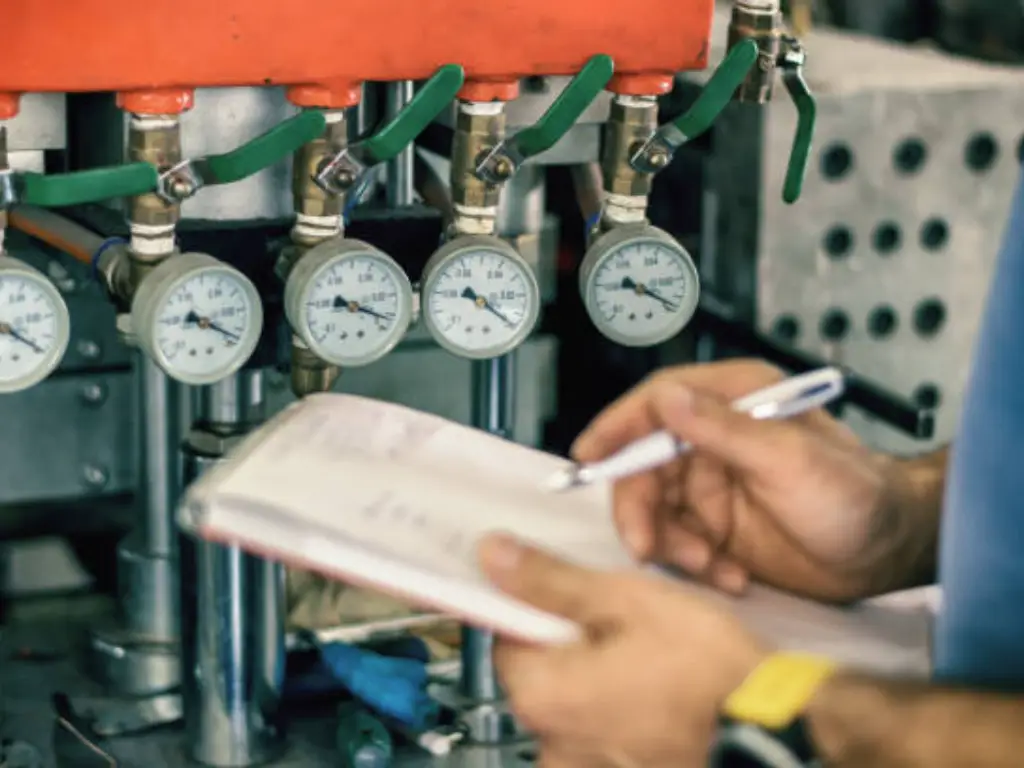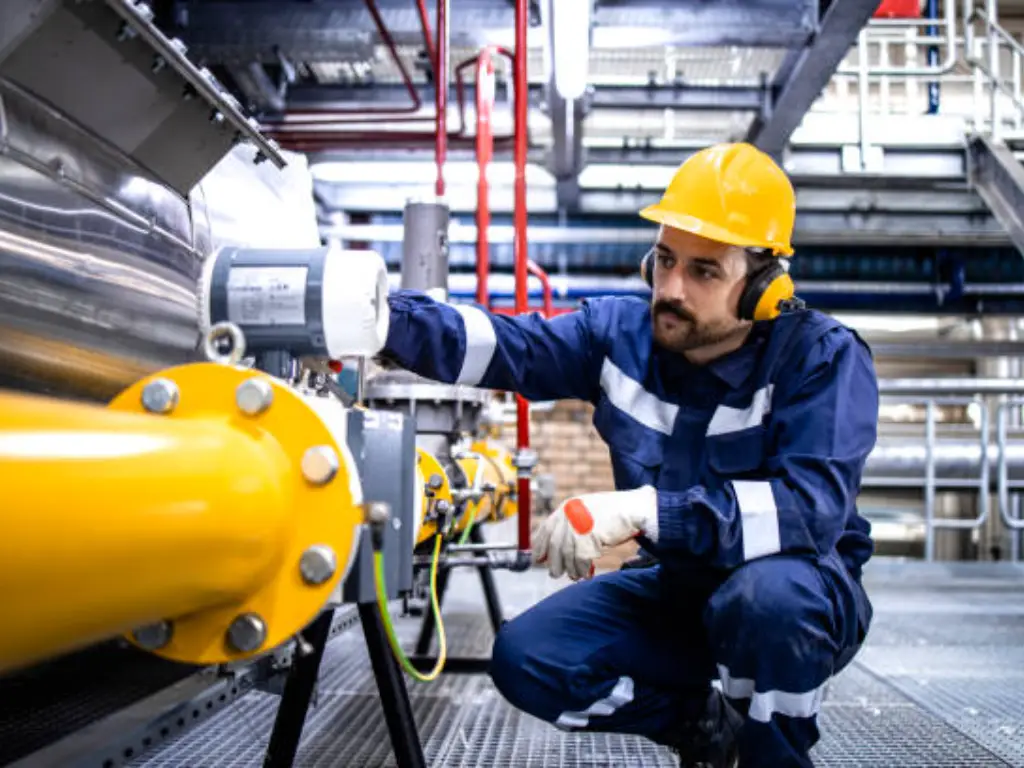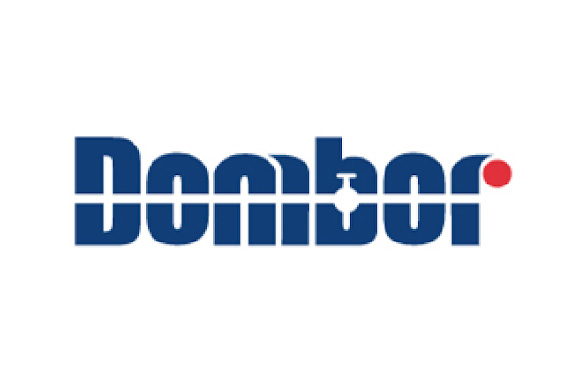There are diverse types of valves, such as butterfly valves, ball valves and control valves. You may be confused about what CV is in the valves industry. Now, let clarify the essentials of CV in butterfly valves.
What is CV and Why It Matters in Butterfly Valves
The idea of CV is the main stuff of how butterfly valves work in different industries. CV in this context is the flow coefficient, also known as measures of flow, specifically imperial measure flow in US gallons per minute of water at 60° fahrenheit with pressure drop of 1 psi across the valve. It indicates the amount of liquid that can pass through the valve, under the condition of a specific drop in pressure. CV, in its essence, captures the relationship between flow rate and pressure drop across a valve, and is expressed in both the imperial system (GPM) and the metric system (LPM). By simplifying it to the formula:
CV = Q / √ΔP
where:
Q = Flow rate in gallons per minute (GPM)
ΔP = pressure drop in pounds per square inch (PSI) across the valve.
CV is of high significance to engineers and those who design systems because it is the CV of a valve that matters most and it is the major factor that determines how well a system is running and how effectively it is doing its job.
First of all, you may wonder, why is it so important for butterfly valves to have this feature? Butterfly valves are a well-known and popular option because they are small and convenient. Since they can be used in different ways like moving water or producing power, they are the most popular type of propeller. Nevertheless, the CV value should be carefully considered while picking the valve; because, the performance of the valve largely depends on the correct CV value. The CV being either too high or too low for a valve is the reason for the problems. The problems that are associated with this are cavitation, a lot of noise and even the system wears out fast. Thus, it is very important to understand the CV and its effect over the things so that we can make smart decisions. This is to ensure our systems do the job properly and last long. It is in this sense that we can attain the desired flow rates and pressure drops.
Exploring the Impact of CV Values in Different Types of Butterfly Valves
With respect to butterfly valves, the design thereof determines the CV values, these, in turn, are the ones that influence the flow rate through the valve. Let us now see how, concentric butterfly valves, eccentric butterfly valves and high-performance butterfly valves, each can have a different impact on the CV value.
Concentric Butterfly Valves: These the simplest types of valve where the stem of the valve is in a straight line with the disc. The simplicity of concentric butterfly valves is a main reason why they are a favored option for applications where a high flow rate and precise control are not so important. Nevertheless, due to its design, it usually takes longer to charge and has lower CV values compared to the other types of batteries. It implies that for the same size, the concentric butterfly valve can have a smaller flow than other valves in the market.
Eccentric Butterfly Valves: Generally called as offset valves, they are made in three types: single, double, or triple offset designs. The off-set means the stem is positioned away from the center, which results in a tighter seat and little wearing of the valve seat. It is due to this unique attribute that eccentric butterfly valves usually have better CV values than concentric valves. They can operate with larger pressure differentials without losing on the flow rate, thus, they are ideal for more complicated applications.
High-Performance Butterfly Valves: The valves with the tightest sealing capabilities are these valves and they are intended to withstand extreme conditions, including high pressure and temperature fluctuations. The high-performance butterfly valves which are designed with more robust features, have higher Cv values. They are designed for tasks where a constant flow rate must be maintained in spite of varying pressures. They can do this by providing a high CV and a reliable seal and therefore are very suitable for high-risk areas.
In order to make the concept more understandable, below is a table of the flow rates for Butterfly Valves at different opening stages between zero degrees (fully closed) and ninety degrees (fully open). Please note that a CV value is not a linear progression.
| Size (inch) | Size (mm) | 10° | 20° | 30° | 40° | 50° | 60° | 70° | 80° | 90° |
| 2 | 50 | 0.1 | 5 | 12 | 24 | 45 | 64 | 90 | 125 | 135 |
| 2 1/2 | 65 | 0.2 | 8 | 20 | 37 | 65 | 98 | 144 | 204 | 220 |
| 3 | 80 | 0.3 | 12 | 22 | 39 | 70 | 116 | 183 | 275 | 302 |
| 4 | 100 | 0.5 | 17 | 36 | 78 | 139 | 230 | 364 | 546 | 600 |
| 5 | 125 | 0.8 | 29 | 61 | 133 | 237 | 392 | 620 | 930 | 1022 |
| 6 | 150 | 2 | 45 | 95 | 205 | 366 | 605 | 958 | 1437 | 1579 |
| 8 | 200 | 3 | 89 | 188 | 408 | 727 | 1202 | 1903 | 2854 | 3136 |
| 10 | 250 | 4 | 151 | 320 | 694 | 1237 | 2047 | 3240 | 4859 | 5340 |
| 12 | 300 | 5 | 234 | 495 | 1072 | 1911 | 3162 | 5005 | 7507 | 8250 |
| 14 | 350 | 6 | 338 | 715 | 1549 | 2761 | 4568 | 7230 | 10844 | 11917 |
| 16 | 400 | 8 | 464 | 983 | 2130 | 3797 | 6282 | 9942 | 14913 | 16388 |
| 18 | 450 | 11 | 615 | 1302 | 2822 | 5028 | 8320 | 13168 | 19752 | 21705 |
| 20 | 500 | 14 | 791 | 1674 | 3628 | 6465 | 10698 | 16931 | 25396 | 27908 |
| 22 | 550 | 17 | 965 | 2042 | 4426 | 7887 | 13052 | 20655 | 30983 | 34048 |
| 24 | 600 | 22 | 1222 | 2587 | 5605 | 9989 | 16528 | 26157 | 39236 | 43116 |
| 26 | 650 | 26 | 1434 | 3036 | 6578 | 11723 | 19397 | 29263 | 46047 | 50600 |
| 28 | 700 | 30 | 1663 | 3522 | 7630 | 12599 | 20036 | 30482 | 46899 | 58696 |
| 30 | 750 | 35 | 1912 | 4050 | 8142 | 13152 | 20411 | 31226 | 47562 | 63328 |
| 32 | 800 | 45 | 2387 | 4791 | 8736 | 13788 | 20613 | 31395 | 48117 | 68250 |
| 34 | 850 | 51 | 2697 | 5414 | 9872 | 15580 | 23293 | 35476 | 54372 | 77123 |
| 36 | 900 | 60 | 3021 | 6063 | 11055 | 17449 | 26086 | 39731 | 60895 | 86375 |
| 40 | 1000 | 84 | 4183 | 8395 | 15307 | 24159 | 36166 | 55084 | 84425 | 119750 |
| 42 | 1050 | 350 | 4095 | 9040 | 17108 | 27150 | 43640 | 70500 | 106890 | 117500 |
| 48 | 1200 | 455 | 5365 | 11840 | 22400 | 30600 | 51200 | 92300 | 140000 | 154000 |
Such information and materials may contain inaccuracies or errors and for more detailed data, it is advisable to contact suppliers directly or technical specifications. Suppliers can provide extensive information and data to help you make the best valve choice for your needs.
In a nutshell, the butterfly valve’s performance will depend largely on the CV value, which is determined by the type of valve selected. Concentric valves will be more suitable for smaller, lower pressure applications whereas eccentric valves offer more versatility with higher performance, and high-performance valves are made for the most demanding conditions. Having the ability to interpret the valve type and the CV value is a key element for the engineer and system designer who would like to have a system that is efficient and reliable.

Material Selection and Its Influence on Butterfly Valve CV Values
Material selection is also another factor that had a great impact on the CV value of butterfly valves. The materials of the valve, the body, the disc and the seat, are responsible not only for the durability but also for the resistance to the different temperatures and chemicals as well as the flow characteristics. For example, a valve with a metal seat would be more suitable for applications with high temperature because it could be more durable. However, a valve with a soft seat would be better for applications with low temperature because the valve could close tighter and the flow characteristics would be better.
Besides, the material of the valve can be the primary factor causing the valve having the resistance or pressure drop. Some materials, e.g. the ones that have a higher frictional coefficient, can be the cause of the medium flowing through them, resulting in a decrease in the CV. This is the place where the knowledge of both CV value and the parameters of the material is critical. It is not only about choosing a valve that can withstand the operational pressures and temperatures, but, also, knowing how these materials can either improve or hinder the system flow efficiency. Therefore, engineers and designers should pay great attention to these factors and choose the material of the valve that will be suitable for the application, providing the best flow rate and at the same time eliminating the pressure drop.

Practical Guide: Matching Butterfly Valve Types to Your CV Requirements
The CV selection of butterfly valve for your system firstly needs to comprehend CV demands. This way, the whole process is simplified and it will seem easier than you could have imagined. Firstly, check on the requirements of your system such as flow rate and pressure changes. This way, you can identify which valve is compatible with your needs. For instance, if you are dealing with high flow rates and would like to have accurate control of the flow, the triple offset butterfly valve is a good choice. It is designed for quick response to significant pressure variations and seals in perfectly.
Next, think of what you system will be able to handle. Will it be corroded by various fluids, very high or low temperatures, or harsh cleaning conditions? These parameters are the most critical in choosing the valve. For a harsh environment like corrosive fluids, the valves made from strong materials such as titanium or Hastelloy might be the most suitable. These materials will influence the CV value and also the valve’s workability and reliability even in severe conditions.
You should select a valve based on the entire context. This includes, for example, CV values, material choices, and what your system, in particular, needs. This way, you can be sure you are getting a valve that not only fits but also functions properly and endures. You’ll certainly get a working system that will run smoothly and reliably, perfectly adjusted to your needs.

Maintenance and Troubleshooting Tips for Optimal Butterfly Valve CV Performance
Maintaining the best CV performance of butterfly valves is not just that of regular checks. It is all about knowing the role of different factors, from wear and tear to incorrect installation, in affecting CV values and as a result system efficiency. First of all, the maintenance program should contain the checks for the signs of wear, especially on the seat and the disc. Wear may degrade the sealing ability of the valve, which can lead to leaks or lower precision of flow control.
In addition, troubleshooting is also a key factor in the maintenance of CVs. If you find out that the flow rate or pressure drops are not expected and don’t match with the system calculations, then it is time to look into the problem. Seek out problems like partial blockages from debris, misalignment, or even the wrong valve size. Each of these factors, on its own, can have a major impact on CV performance, which in turn leads to inefficiencies in your system.
Remember that the key to success here is preventive maintenance and quick troubleshooting. Through proper maintenance and alignment of your butterfly valves with the system’s CV needs, you will be able to avoid unplanned downtimes and ensure smooth and steady flow control.
Conclusion: Enhancing System Efficiency Through Accurate Butterfly Valve CV Selection
In brief, the selection of suitable CV value for butterfly valves is important for enhancing system efficiency and reliability in various industrial applications. We are not only technical. It’s a key point that will contribute to the improvement of the system and its reliability. In this regard, the fact that the CV values affect different valves and the role of material choice in it should be taken into account. All details really matter to ensure that your valves run at their best and beyond expectations.
The right butterfly valve can indeed make a great difference as to how your system works. But you have to look at the whole story. This implies considering Cv values, the material of which the valve is made, the purpose for which you need it, and doing proper maintenance. If engineers and those who design systems follow this procedure, they will be able to keep the system running as it should. This will help your system perform optimally and prevent your investment from going to waste.
We strive to achieve this comprehensive view by understanding how we select and maintain butterfly valves and the end result would be systems that run better, last longer and perform well in all types of industrial uses. Thus, we ensure that the engines of our industries don’t lose the momentum.
For more information and assistance with selecting the right butterfly valve for your specific needs, feel free to email us at info@dombor.com










